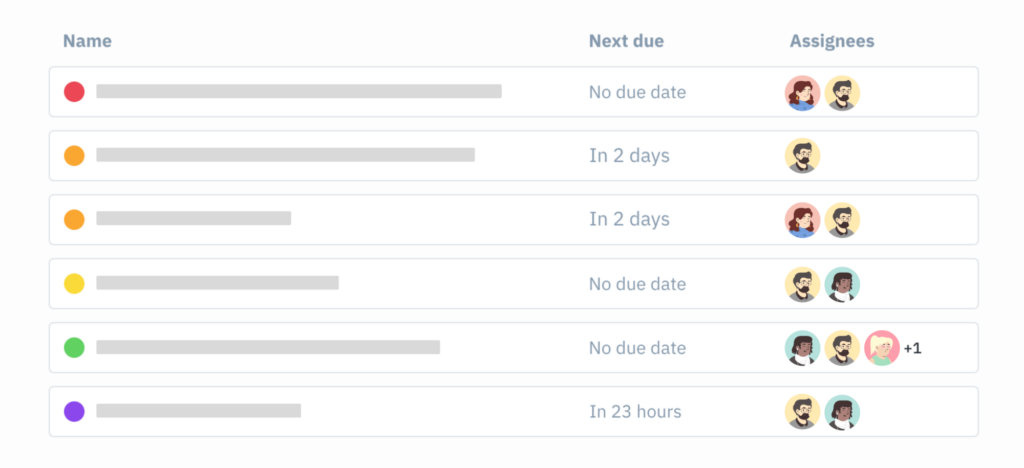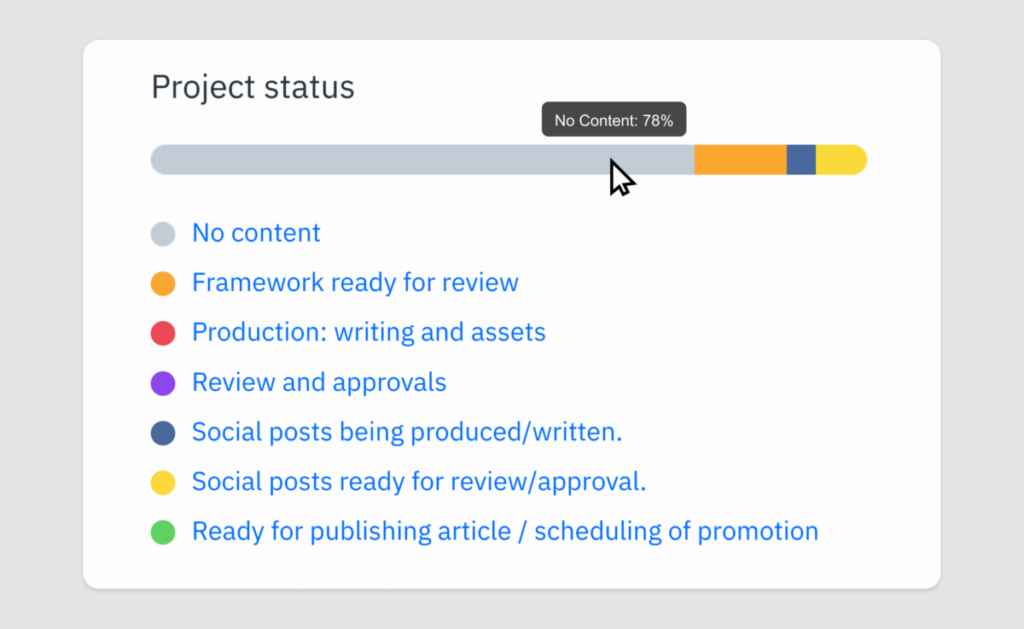How to align multiple contributors and stakeholders while producing content at scale.
- |
- |

If you oversee multiple marketing teams at a large-scale health or social services provider, you’re lucky—even though, admittedly, the past few pandemic-defined years have likely been a challenge.
Your work is incredibly meaningful. The people are passionate. And, from a content perspective, there are many, many incredible stories to tell.
While these are significant benefits, they can also manifest as challenges. When you have many passionate writers and marketers working to articulate a breadth of stories and ideas, things can get a little noisy.
Perhaps you have different state-based teams producing website content under a single national banner. Perhaps you have one large team working on many different campaigns concurrently. Perhaps you have multiple programs or service lines, each with distinctive requirements for their own marketing activity. Perhaps you rely on timely approvals from multiple stakeholders, each with different levels of literacy and experience of digital products.
As part of a unification project to support their shift to a federated model, Guide Dogs brought five different marketing teams together and faced a number of these scenarios.
Consolidating five unique websites into a cohesive content experience under the one banner is not without its challenges, especially when:
- Each site had distinctive terminology and conventions for articulating different concepts.
- Each site had a different structure and information architecture (or, different logic for how pieces of content should fit together).
- Each site is supported by an in-house team of marketers and content-producers.
Here’s how to get everyone working in harmony while producing content at scale.
Get everyone singing from the same song (or style) sheet.
Give your teams clear, practical guidelines for how written content can and should come to fruition. Perhaps you already have a detailed style guide, perhaps you don’t.
If one doesn’t exist, you don’t need to create anything exhaustive. Just some simple overarching context, some examples of how to articulate certain topics, how not to articulate others, and preferred words or phrases.
For example, you might prefer the word ‘people’ rather than ‘patients’ or ‘clients’ when referring to those who engage with your services.
This convention mitigates a scenario where you have to provide the same feedback or implement the same edits continuously. When you’re talking about a website with 2,000 different content pages, these minor time savings can be significant.
The goal is to create as much alignment as possible for many contributors, rather than enforce absolute rigidity.
Make it clear how people contribute.
In my experience, working with many content contributors at once is like building a plumbing or pipeline system.
The more clarity and constraint you provide, the better and more efficiently things will flow towards your objective. Without structure and clarity, there will be leakage and deviation from your goal.
Working with many content teams at once is like building a plumbing system: without structure and clarity, there will be leakage and deviation from your goal.
Using a preparatory CMS platform is a great way to provide this clarity and structure. That includes things like:
- Who is tasked with writing each content piece.
- How many words it needs to be.
- The functional purpose of the content (and even different sections of content within the one webpage).
- How it is approved.
- When to trigger certain review or approvals processes.

Pre-CMS platforms can provide visibility of roles, responsibilities, and expectations.
Using a platform like GatherContent, Narrato, or Adobe Experience Manager you can provide granular clarity for all of the above.
Again, at scale, and with hundreds of contributors or reviewers, with different levels familiarity with the project, this can be invaluable.
Be transparent and track progress.
Returning to the plumbing and pipeline analogy, it’s important to check for blockages along the way. This helps to identify any sticking points for your teams of contributors.
This is an example of a content workflow with approvals gates.
We can see in the above hypothetical workflow that most content items have ‘no content’. You might infer from this information that people have trouble starting and getting their initial thoughts on the page. For whatever reason, they’re unable to move to the ‘framework ready for review’ stage of the production and approvals process.
With this insight, you could do any number of things to encourage progress:
- Facilitate a workshop to provide more insight on how to create a framework.
- Create and distribute an example of a framework for others to use as a reference.
- Celebrate the efforts of those who’ve created a framework, and more.
On the flip side, without visibility of this workflow, you can’t identify the team’s challenges or provide supports to facilitate a smooth content production process.
Check in frequently.
The key here is a little, often. Do everything you can to avoid an ‘a-ha’ moment. For example, if there’s a leak in your production pipeline, identifying it quickly will save you trouble.
The longer a pipe leaks, the muddier things get. These leaks can manifest as:
- People writing the wrong type of content, like editorial blog articles instead of branding content to influence positioning.
- Misapplied tone of voice.
- Using inappropriate terms consistently, at scale.
- People not knowing what to do and procrastinating.
Be proactive, consistent and visible with your check-ins. Put them in writing, ideally in a central location where many stakeholders can see and access them. For example, in the above example with ‘framework ready for review’, highlight your observation about the perceived difficulty a framework created.
Get feedback from the team. Sharing the challenge and making it visible is the best way to own and manage it.
So there you have it…
It sounds so simple. But with many of these techniques—as with content production at scale in general—the devil is in the detail.
With the right approach, you’ll find content production incredibly rewarding. Even addictive, as you watch your content deliver increasing amounts of genuine value for your audiences.
The other side of the equation? Well, no one enjoys writer’s block. Much less so when there are multiple teams and stakeholders mired in the experience alongside you.
On the plus side, if you find yourself in this scenario, you can always remedy the situation. It takes diligence and multiple techniques in the right combination for your requirements.
Good luck!
More Articles
Up for some more?
Get your monthly fix of August happenings and our curated Super8 delivered straight to your inbox.
Thanks for signing up.
Stay tuned, the next one isn't far away.
Return to the blog.
